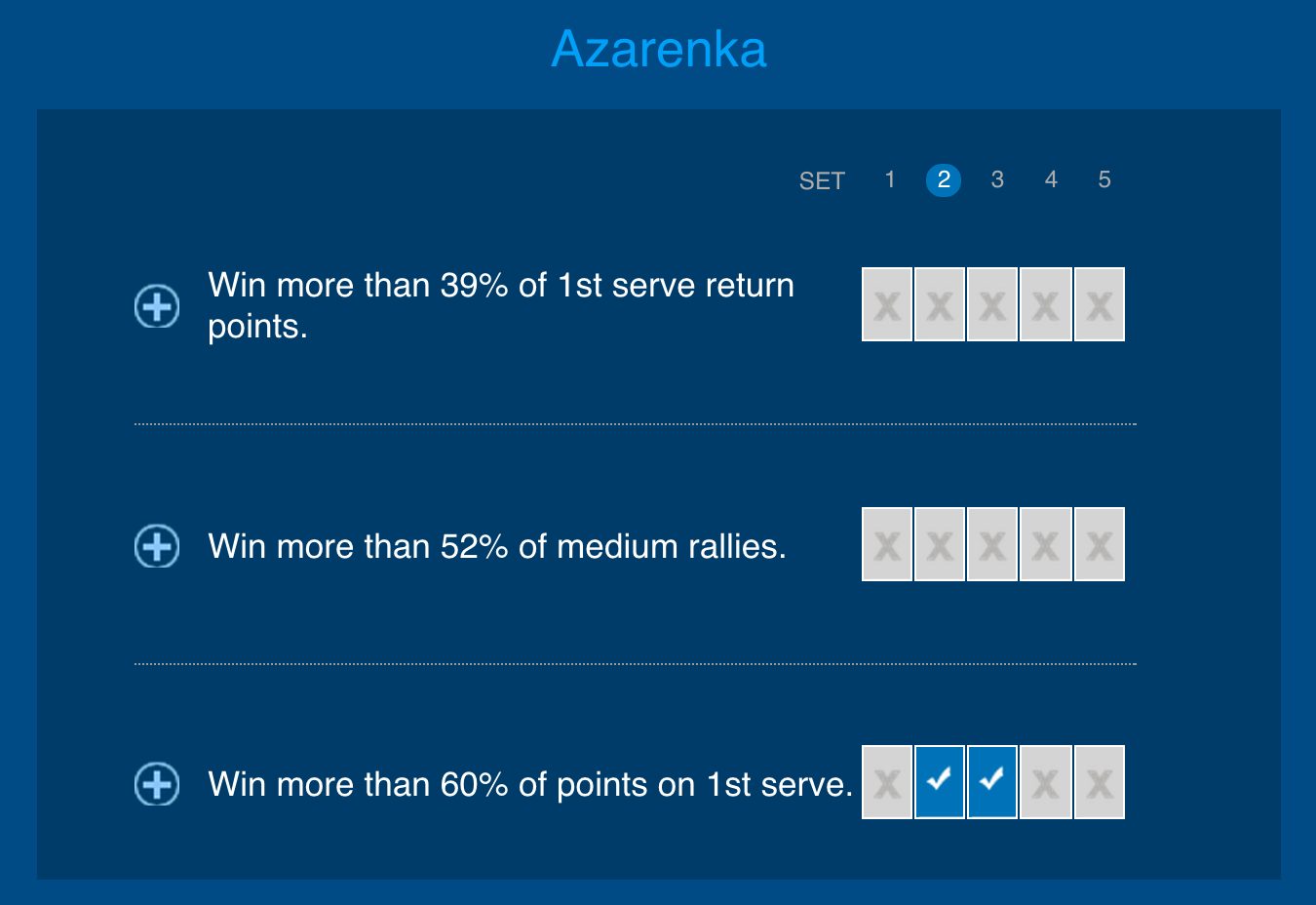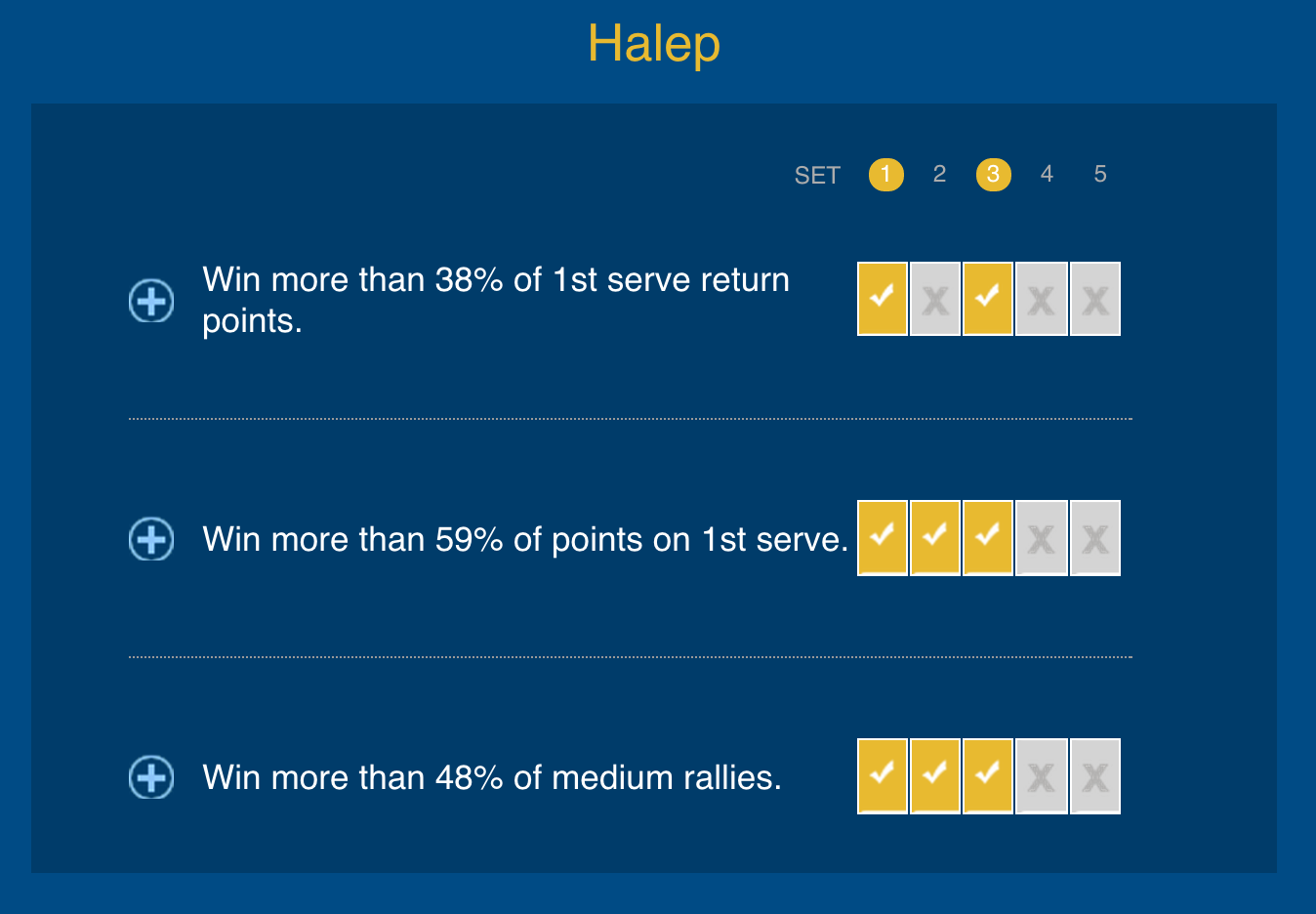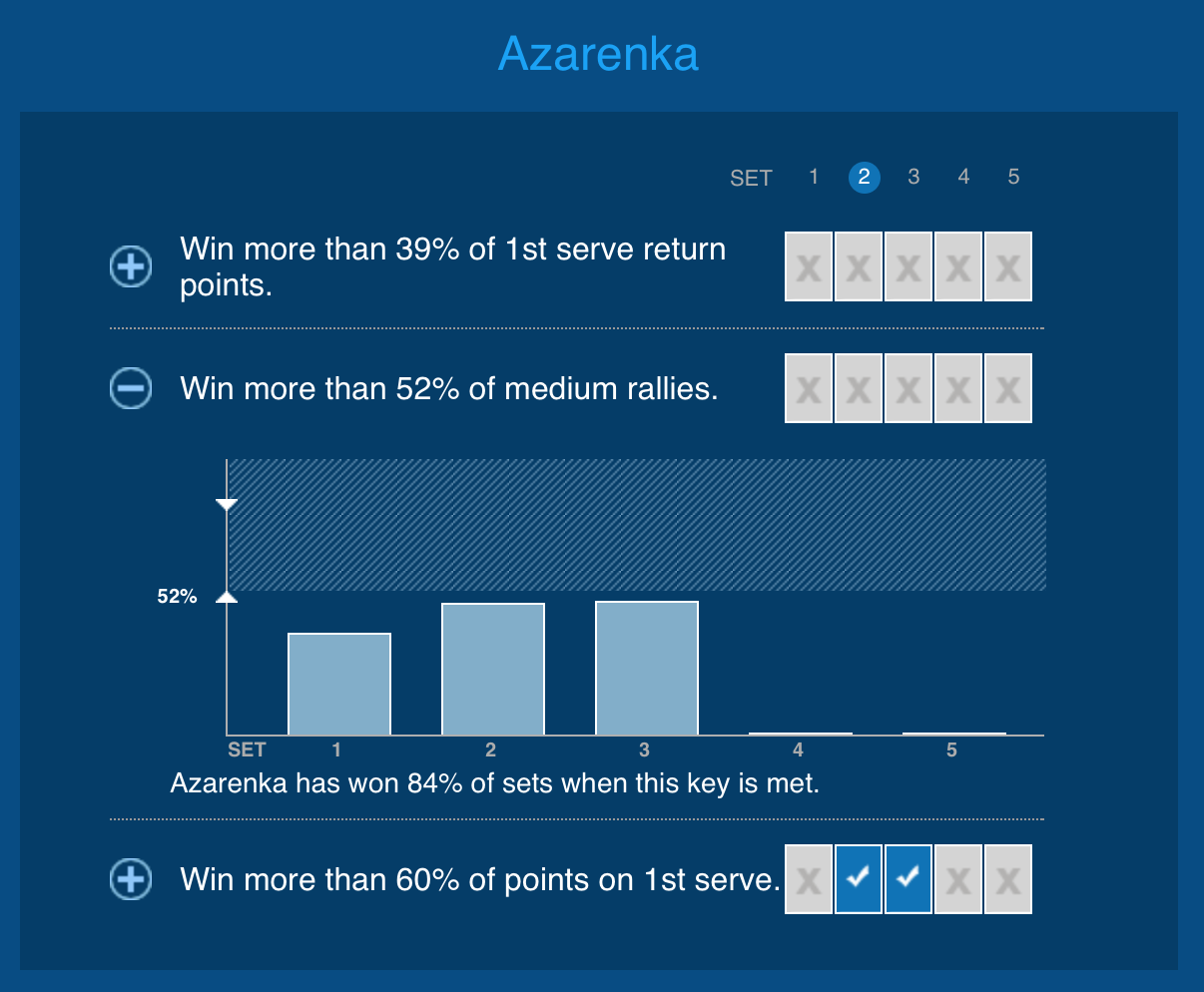10 Things You Won't Believe About IBM Insights!
10 Sep 2015At the 2015 US Open, IBM is continuing its long partnership with the USTA to bring tennis fans “more than the score”. One of the main ways that Big Blue is going beyond the score is with their Keys to the Match–basically, a dashboard with performance targets for a given head-to-head.
If you are like me and have ever perused the Keys on a changeover over player bathroom break, you might have wondered exactly what insights they contain. But the company that built Deep Blue and Watson must certainly know what they are doing when it comes to tennis analytics, right? Their ads are an equation for goodness sakes (“IBM + Tennis Data = More than the Score”).
As luck would have it, when seeking shelter during the rain delay of the Halep-Azarenka quarterfinal yesterday, I found myself under the canopy of IBM’s booth at Flushing Meadows next to a smiling company rep. (At least, I assume he was a rep; he wore a blue shirt and offered to answer some of my questions about the company’s Keys, in any case.) Here is a summary of our conversation and what I learned…
Q1. How are Keys chosen? We have a Centralized Key Generator powered by 10 Power8 processors that runs 1 million match scenarios to identify the performance statistics with the most influence on the match outcome. When there is a tie, we let Watson decide.

Q2. I have noticed that players always get 3 Keys. Why is that? Our research shows that 3 performance metrics explain 99% of variation in match outcomes. It’s what we call the “Law of 3 Keys”.
Q3. When a Key gets a checkmark, what exactly does that mean? In user testing, we have found that fans prefer the certainty implied by a checkmark and get confused by numbers, so we try to avoid numbers.
Q4. But don’t the Keys always have numbers? Well, yes…There are still some design flaws we are working through.
Q5. In the Halep-Azarenka match, both players had Keys that referred to performance on “medium rallies”. What makes a rally “medium”? Medium rallies are between short and long rallies.

Q6. Does the order of the Keys matter? Great question. Yes, each Key is 32% more important than the Key that follows it.
Q7. When I click on the “+” sign on Azarenka’s second Key, I see a bar graph and a sentence that “Azarenka has won 84% of sets when this key is met”. 84% of which sets exactly? All sets. We at IBM believe that more data is always better data.

Q8. In the first set, Halep met all of her Keys and she wins 70%, 68%, and 66% of sets when each Key is met, respectively. So what was her overall chance of winning a set with 3 of 3 of these Keys? We usually don’t recommend that our fans do any calculating themselves but, if you really want to know, you would take the sum of the probabilities and then take the minimum of the sum and 100%.
Q9. In the second set, Azarenka met only 1 Key and Halep 2 Keys, but Halep lost the set. What happened? IBM helps fans see tennis in a new way but we can’t control chance.
Q10. If two players earn the same number of Keys in a match, how do you predict who wins the set? Rochambeau!
If you liked this story, share it with your followers or follow this site @StatsOnTheT on Twitter.
